Day 1We woke early on Wednesday, packed our gear, and headed to Bosque. We left with plenty of time to drive down, get in position, and set up for sunrise, which was scheduled for 7:00.
Since the goal of this sunrise shoot was to witness and photograph the blast-off, priority number one was obviously to find the geese. Generally, the geese fly in to a specific pond throughout the afternoon in small groups, and that's where they are typically still in the morning. However, it is not unusual for the entire flock to move to a different pond in the middle of the night, due to predators (real or perceived). The refuge is not a very large place, but there are a few distinct areas. It takes around half an hour to drive through the entire place.
Our original plan therefore was to drive the entire refuge with the windows down, listening for them in the pitch dark. Once we found their pond, we would know from prior research where exactly to set up.
In the end though it was much simpler: we had been in touch with
Moose Peterson, one of the top wildlife photographers in the world, who'd left Bosque just two days prior. He informed us that for the last week or so the geese were all congregating in one of the main ponds, and the best viewpoint was just north of the Flight Deck, which is a small boardwalk installed at that pond.
Choosing to rely on him rather than do a freezing cold drive on dusty dirt roads was a no-brainer, so Wednesday morning found us setting up shop in the dark along with some other photographers. My setup consisted of the Nikon D500 and Sigma 150-600mm lens, an absolute dream birding combo. This was mounted on a solid tripod with a gimbal mount, which is a mount that perfectly balances your camera, allowing you to move it freely in any direction while remaining solidly in place as soon as you let go. Next to that was a tripod-mounted D600 with a 24-70mm lens, set to continuous shooting at 1-second intervals and remotely triggered. The idea was to be able to capture both extreme closeups of individual birds and the blast-off, plus wide all-encompassing shots at the same time. whYME and CITH both had very similar setups to mine.
In the end, the second camera was a bust. The scene was so incredible that it was difficult enough to shoot with one camera, let alone two. I did get some semi-decent video of a smaller, later blast-off, but that was as good as it got.
Eventually it started getting a bit light, and we were able to see some of the thousands upon thousands of geese in the water. They were beginning to stir, and the din was growing louder every minute. It was too dark to take pictures, so we just stood and watched.
All of a sudden there was a deafening roar: tens of thousands of wings beating the air simultaneously. The blast-off has begun:
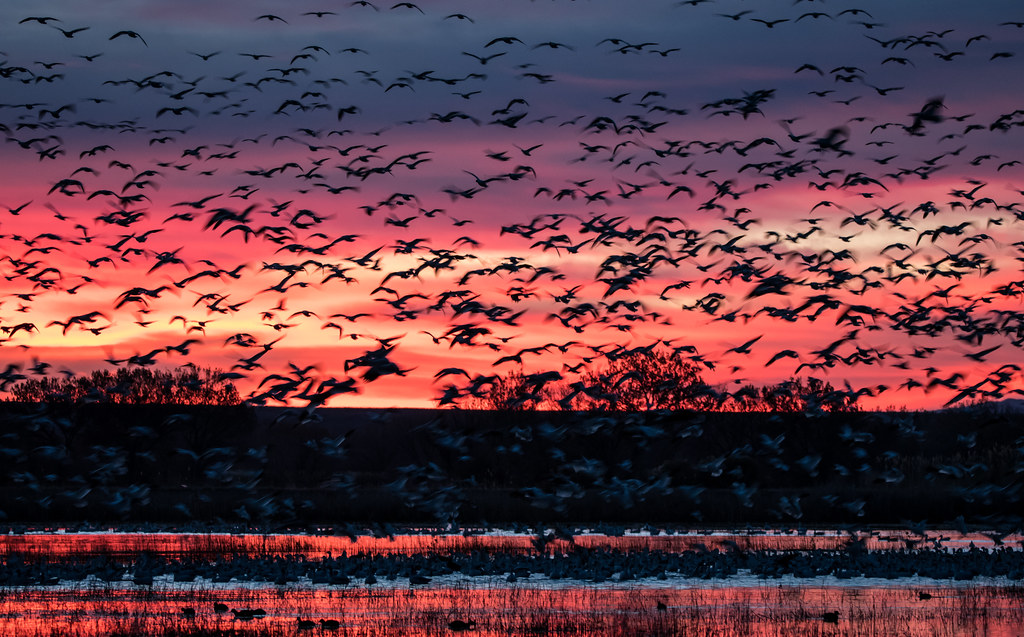
The entire thing lasted for maybe 30 seconds, but what an incredible sight!
Looking back at the pond, we were surprised to see huge numbers of geese remaining. Turns out that instead of a single blast-off, we were treated to multiple "smaller" explosions, each one thousands of geese strong.
The light finally got good enough to let us take some more pictures... Here are a couple of sandhill cranes singing, with innumerable geese in the background:

A smaller blast-off, only a couple hundered this time:

Yet another one:
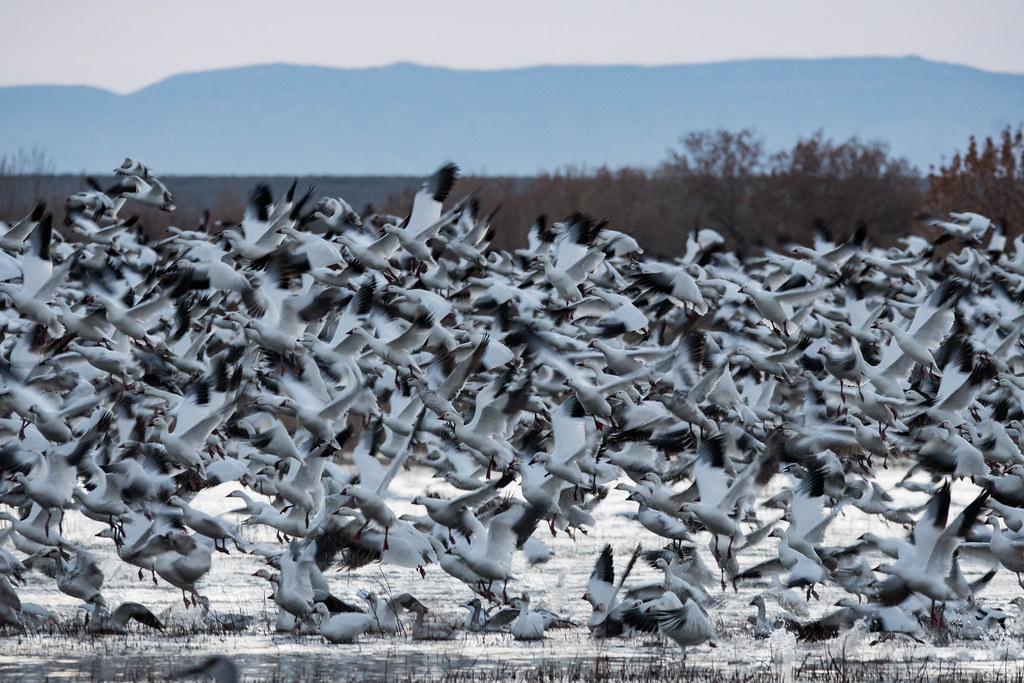
Fairly lousy picture, but I just love the expression on his face:

Small groups of geese would constantly jump up a few feet, look for a better spot, and land again:




This sandhill crane was sleeping in late:

"What?! It's 7:30 already??? Gotta go gotta go gotta go!":
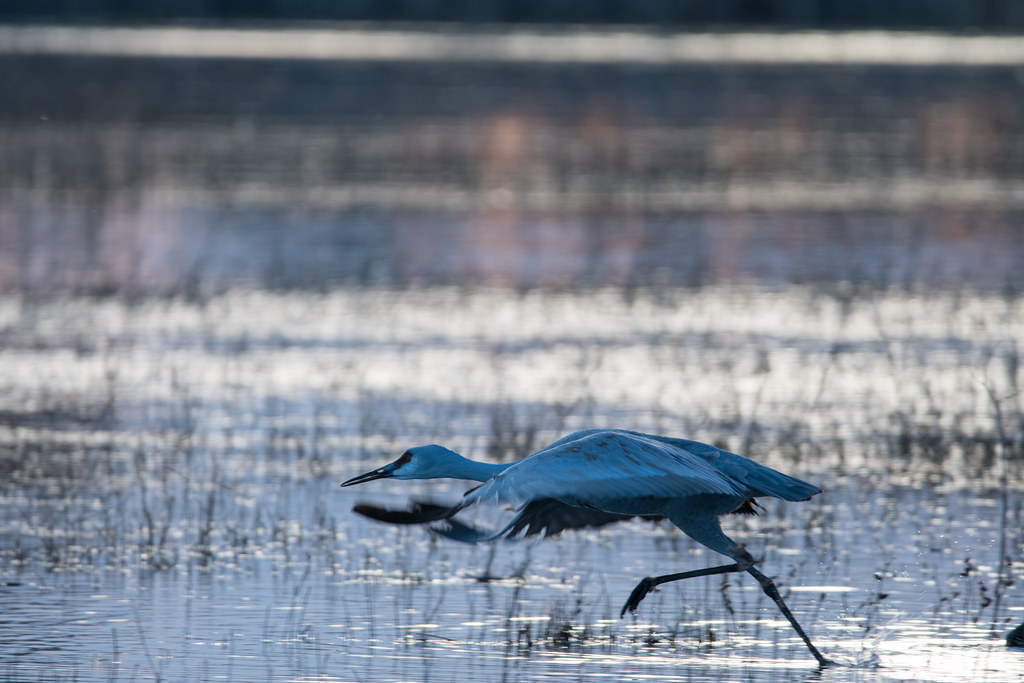
Some lovely golden light:



Some more blast-offs:


By around 8 o'clock all the geese had gone, so it was time to follow them: off it was to the "Farm" area. In the north of the refuge biologists plant corn and alfalfa, which serves as food for all birds. That is where all the geese had gone, so we went to watch them eat breakfast.
On the way we passed this guy, who apparently spent his days sitting on this perch in the middle of the largest pond:

The geese were gathered in tremendous numbers on the alfalfa field when we got there. All of a sudden, a blast-off larger than any we'd seen that day occurred:

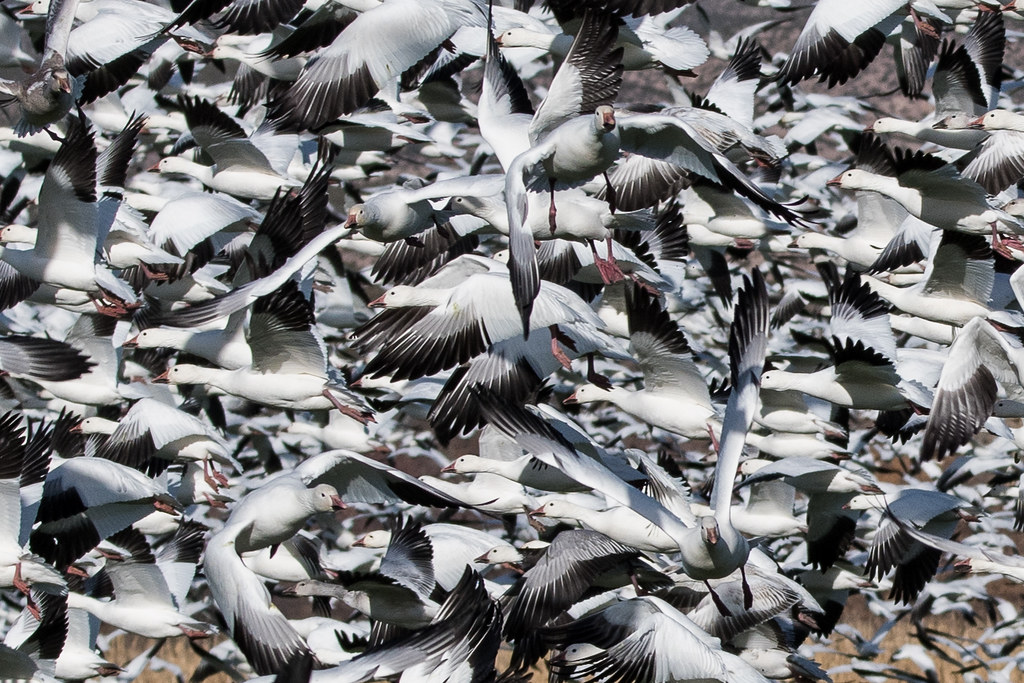


The reason for this seemingly random panic became clear before long - someone else wanted breakfast, too:
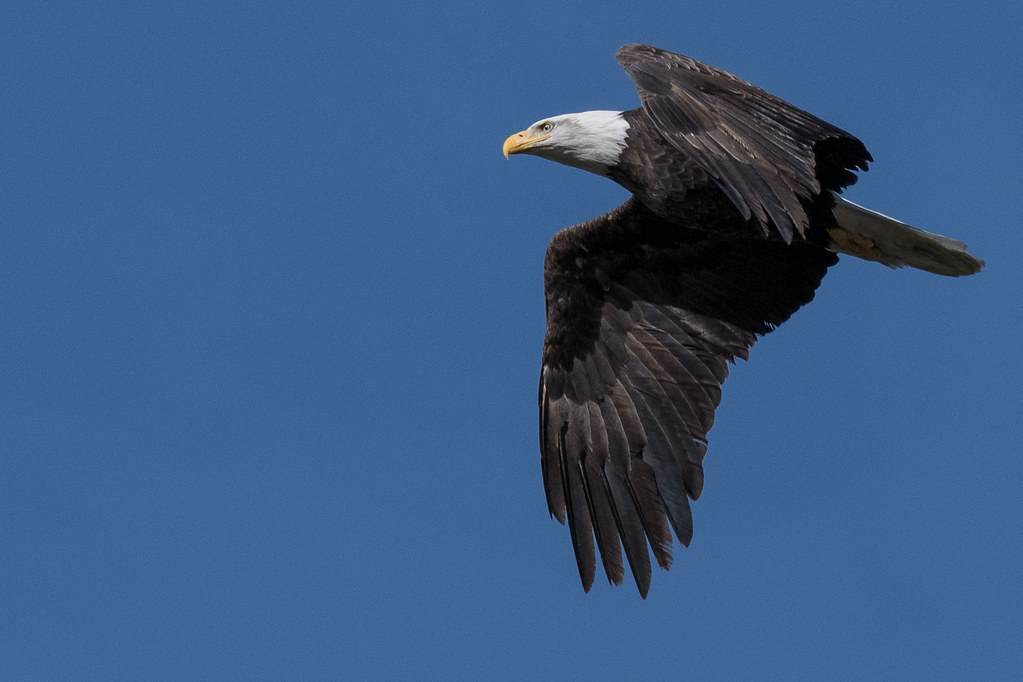
After a bit the eagle gave up and the geese settled down again.
A murmuration of starlings in the corn fields:

The geese moving from alfalfa to corn:

By now it was nearly 10, and the light was getting harsh and not conducive for photography. For the rest of the day the birds go from one field to the next feeding, so there's not much to shoot anyway. So it was back to Socorro for Shachris, breakfast, and a good long nap.
Duly rested, it was back for an afternoon and sunset shoot.
This time of the day it's the cranes who are the star of the show. They gather in vast numbers in the corn fields, then depart in twos and threes for their overnighting ponds. These birds are huge, standing 4 feet tall with a wingspan of over 7 and a half feet. It's fascinating to watch them socialize, fight, run along the ground to gain speed for takeoff, and "helicopter" in for a slow, hovering landing.

 ATC? This is crane. Requesting permission to land
ATC? This is crane. Requesting permission to land:
 Whaddya mean, "I gotta wait"?!
Whaddya mean, "I gotta wait"?! Too bad fellers, I'm coming in
Too bad fellers, I'm coming in:


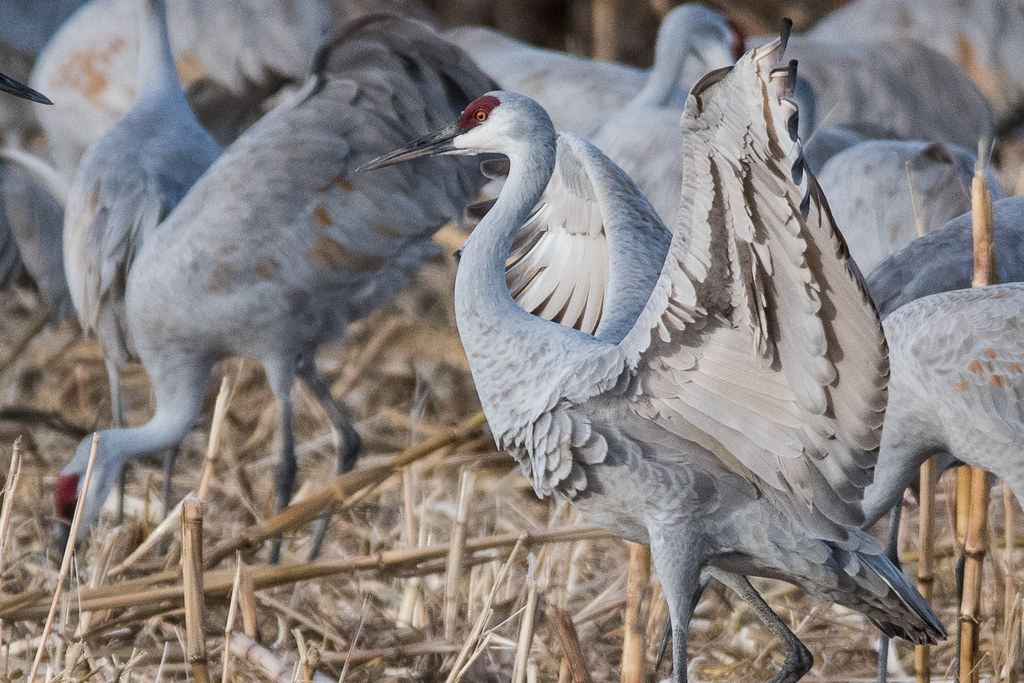

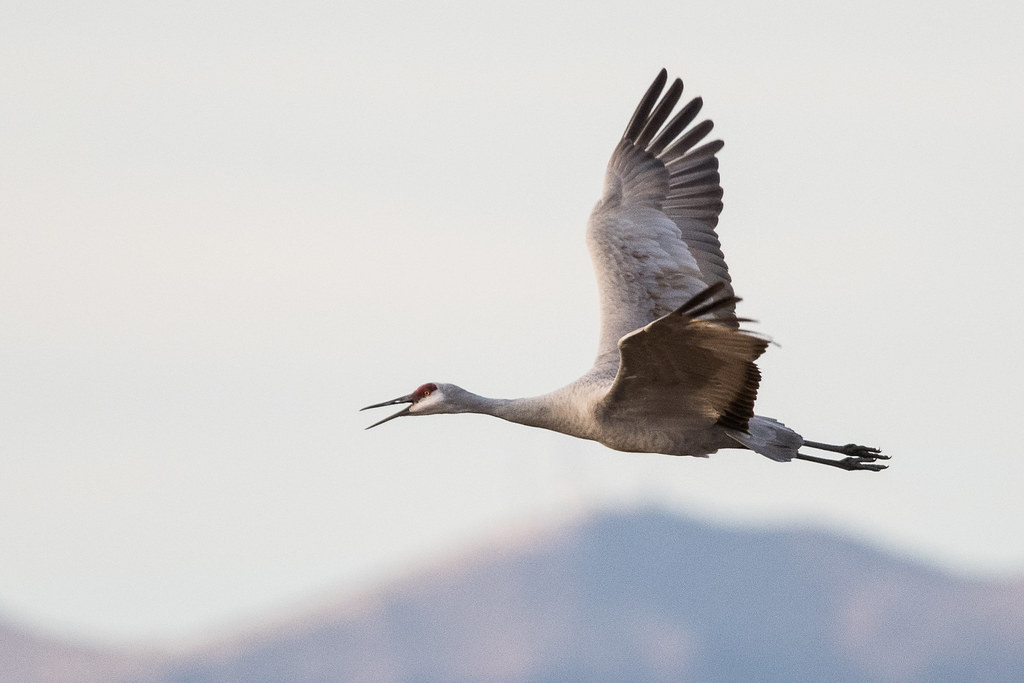
Sunset that day did not cooperate, with a bank of clouds moving in late afternoon. So eventually we followed the cranes to their favorite pond, called - get this - Crane Pond. By now it was quickly getting dark:


Good night, sleepyheads. See you tomorrow:
